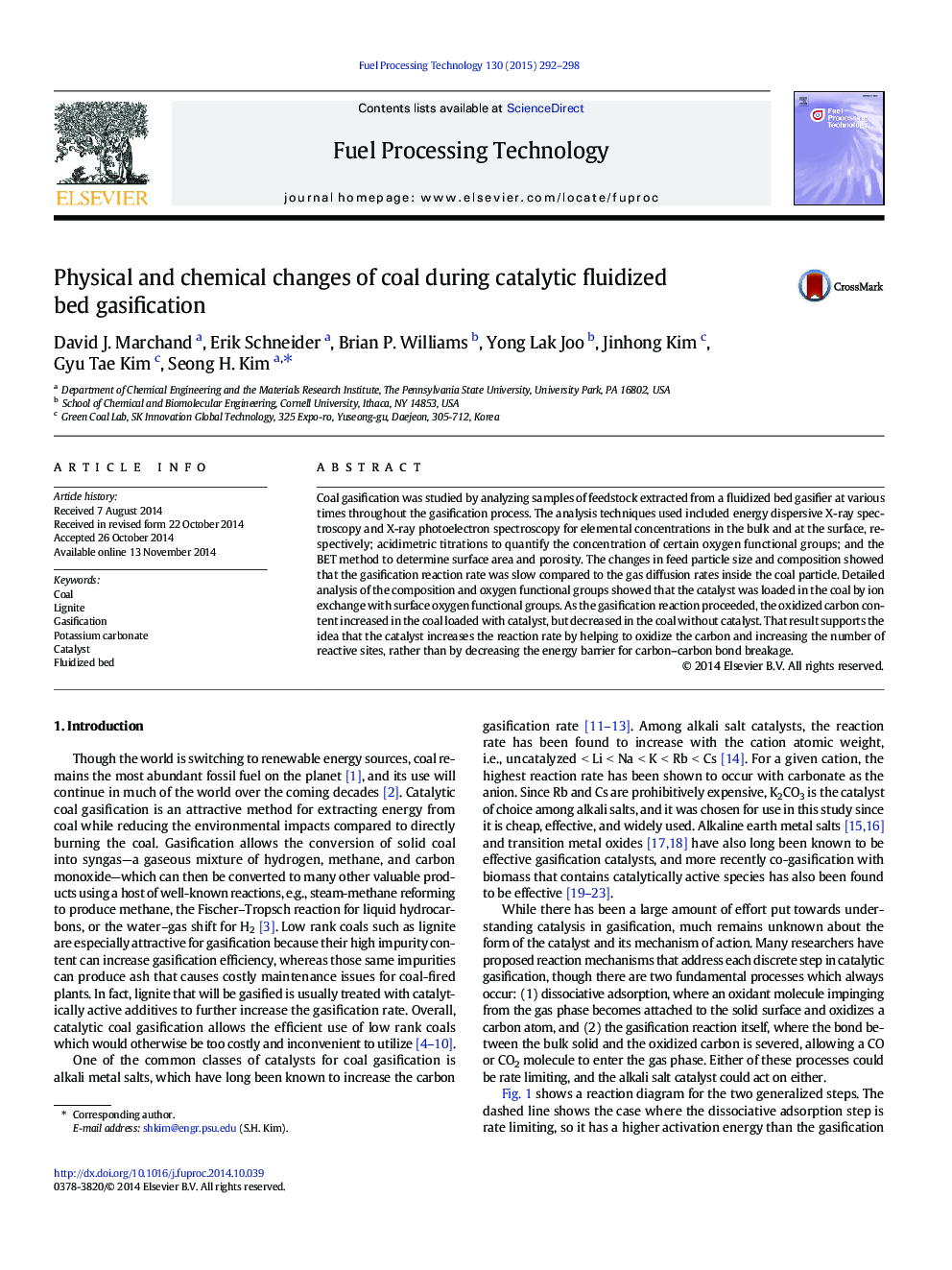| Article ID | Journal | Published Year | Pages | File Type |
|---|---|---|---|---|
| 209565 | Fuel Processing Technology | 2015 | 7 Pages |
•Coal feed particles were analyzed after gasification in a fluidized-bed reactor.•K2CO3 catalyst entered coal via ion exchange of K+ with H+ in carboxylic acid groups.•Size and composition profiles showed that diffusion was faster than the reaction.•Coal particles were enriched in oxidized carbon only when catalyst was present.
Coal gasification was studied by analyzing samples of feedstock extracted from a fluidized bed gasifier at various times throughout the gasification process. The analysis techniques used included energy dispersive X-ray spectroscopy and X-ray photoelectron spectroscopy for elemental concentrations in the bulk and at the surface, respectively; acidimetric titrations to quantify the concentration of certain oxygen functional groups; and the BET method to determine surface area and porosity. The changes in feed particle size and composition showed that the gasification reaction rate was slow compared to the gas diffusion rates inside the coal particle. Detailed analysis of the composition and oxygen functional groups showed that the catalyst was loaded in the coal by ion exchange with surface oxygen functional groups. As the gasification reaction proceeded, the oxidized carbon content increased in the coal loaded with catalyst, but decreased in the coal without catalyst. That result supports the idea that the catalyst increases the reaction rate by helping to oxidize the carbon and increasing the number of reactive sites, rather than by decreasing the energy barrier for carbon–carbon bond breakage.
Graphical abstractFigure optionsDownload full-size imageDownload as PowerPoint slide
